Which States Have the Highest and Lowest Cancer Rates?
Written by Sean Marchese, MS, RN
We reviewed the CDC’s data records to rank the states facing the highest and lowest cancer rates. These rates were determined by calculating the total new cancer incidences per 100,000 residents.
The state of Kentucky has the highest cancer rate in the country, while New Mexico has the lowest cancer rate. A variety of factors help explain these rankings, including access to medical resources and smoking rates among adults. Here we will take a closer look at how these and other states rank and why.
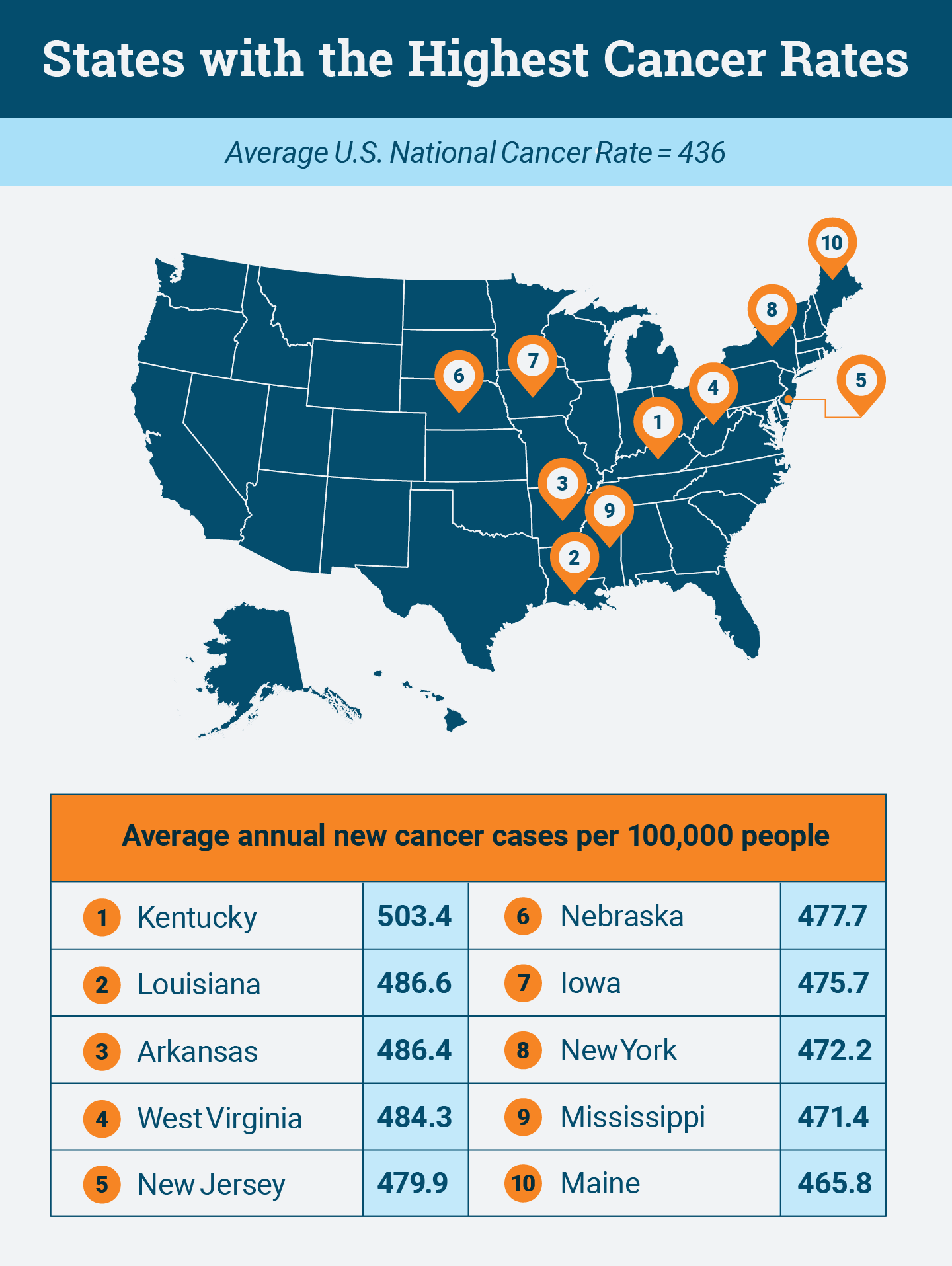
Southern States Facing the Highest Cancer Rates in the U.S.
Three Southern states lead the list with the highest cancer rates in the entire country. Kentucky holds the top spot with 503.4 new cases of cancer per 100,000 state residents. Louisiana slightly edges out Arkansas for the second position, with a cancer rate of 486.6 vs. 486.4, respectively. These rates all surpass the national average of 436 new cancer cases for every 100,000 people.
One important factor facing half of this top 10 list is poverty, which is believed to be a contributing factor in heightened cancer risks. Kentucky, Louisiana, Arkansas, West Virginia and Mississippi are five of the six states with the largest proportion of people living below the poverty line.
Cancer Rates Highest in Kentucky
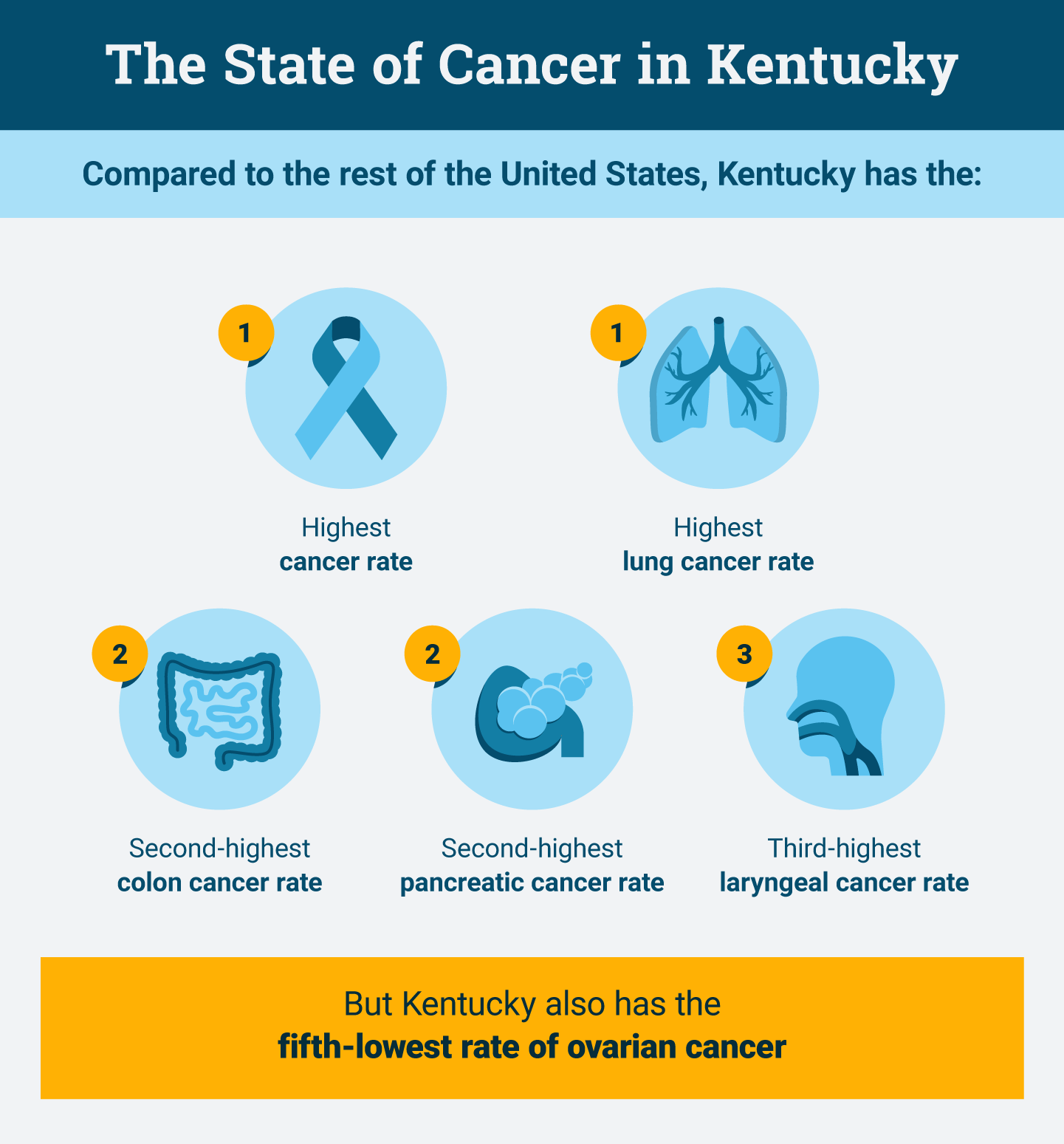
Kentucky leads the country not just in overall new cancer cases. When looking closer at specific types of cancer, it also has the highest rate of new lung cancer cases, the second-highest rates of both colon and pancreatic cancers and the third-highest rate of laryngeal cancer. In contrast, it is interesting to note that the state also has the nation’s fifth-lowest rate of ovarian cancer.
The combination of poor access to health resources due to poverty and a high percentage of people living with cancer-causing issues such as smoking and obesity factor into Kentucky’s position on these lists. Sixteen percent of the state’s population is living in poverty. Adults with obesity make up 36% of the population and the state also has the second-highest number of adult smokers in proportion to its population.
Mountain States Have Lowest Cancer Rates
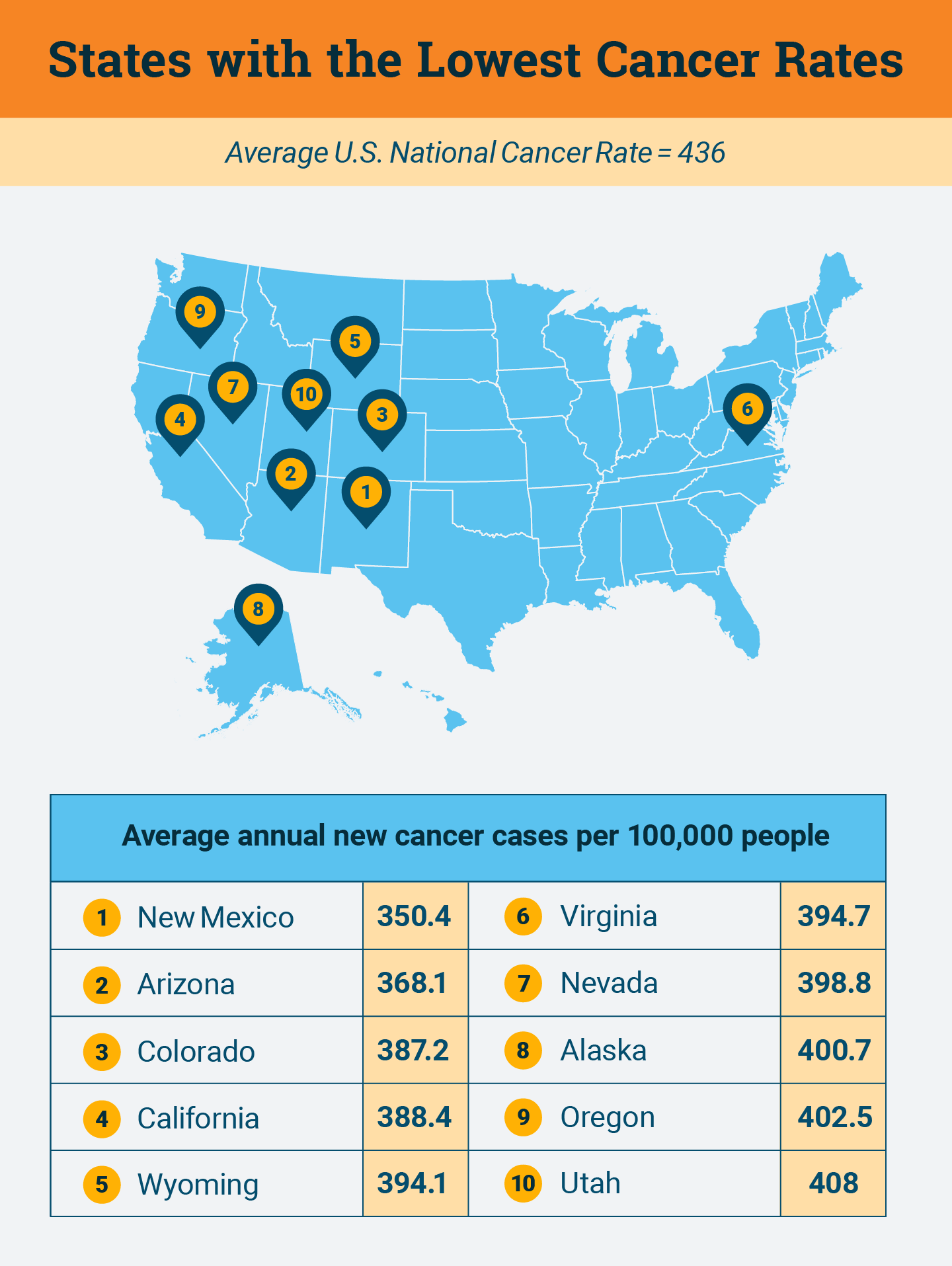
When identifying the states with the lowest cancer rates, three states in the Mountain time zone came out on top. New Mexico came in at No. 1, with 350.4 new cases of cancer per 100,000 in population annually. Arizona has the second-lowest rate of 368.1 and Colorado has the third-lowest with 387.2.
To date, researchers are unable to identify scientific reasons for the consistently lower cancer rates in this region.
Cancer Rates Lowest in New Mexico
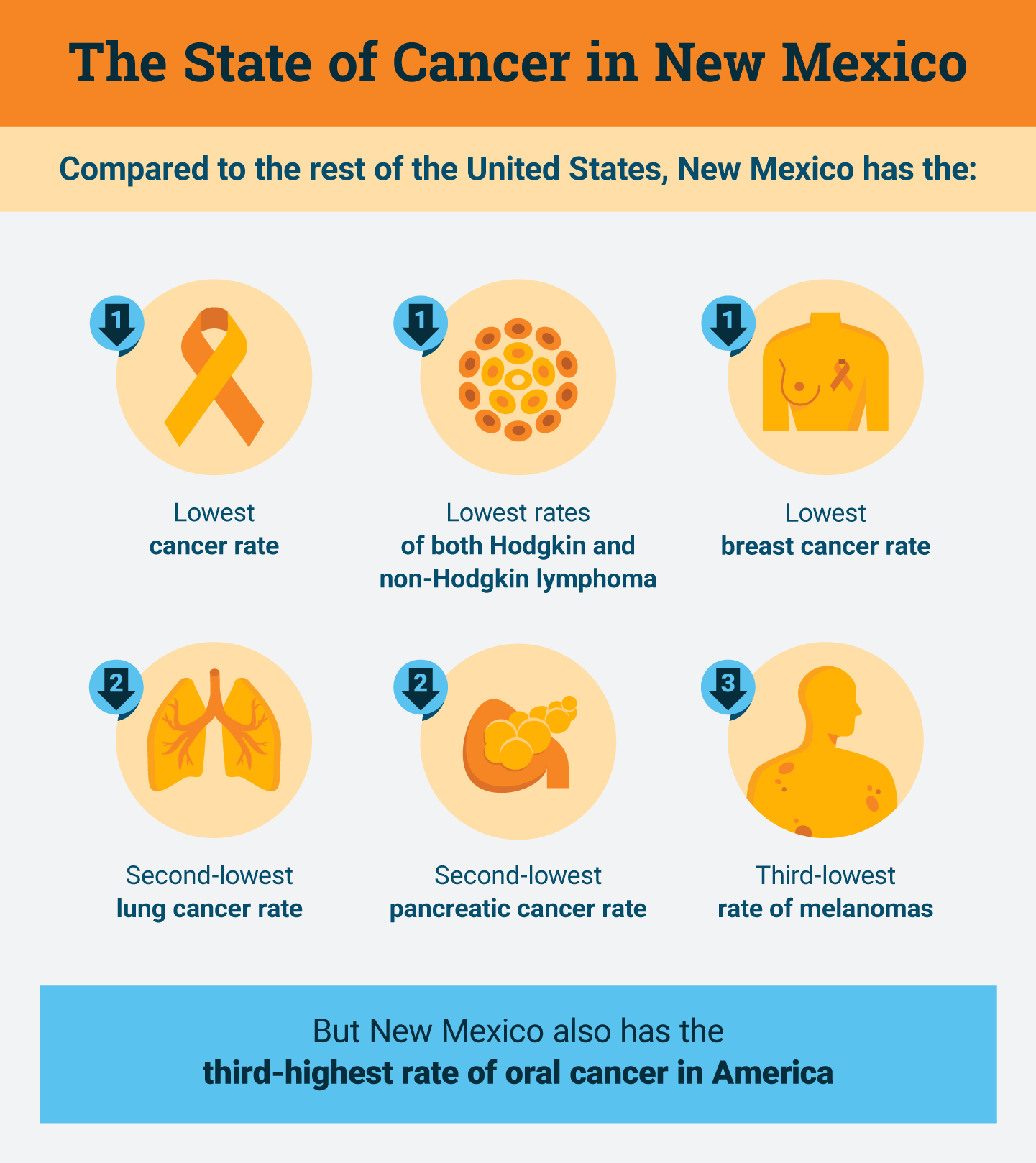
New Mexico has experienced the lowest overall cancer rates in the country for several years. It currently has the lowest national rates of breast cancer and both Hodgkin and non-Hodgkin lymphoma.
The state is also among the top five lowest for multiple other cancers, including ranking second-lowest for both lung cancer and pancreatic cancer rates. The American Lung Association reports that the early diagnosis rate for lung cancer has improved 28% in New Mexico over the last five years.
One cancer that does seem to be a problem in New Mexico is oral cancer, for which it ranks third-highest in the country.
How States Rank with the Most Common Cancers
The most common cancers impacting Americans are breast cancer, prostate cancer and lung cancer, according to the National Cancer Institute. Last year, new cases of breast cancer were predicted to reach 284,200 in the United States. Prostate cancer cases were expected to increase by 248,530, while 235,760 new lung cancer cases were anticipated.
Breast Cancer Rates in the U.S.
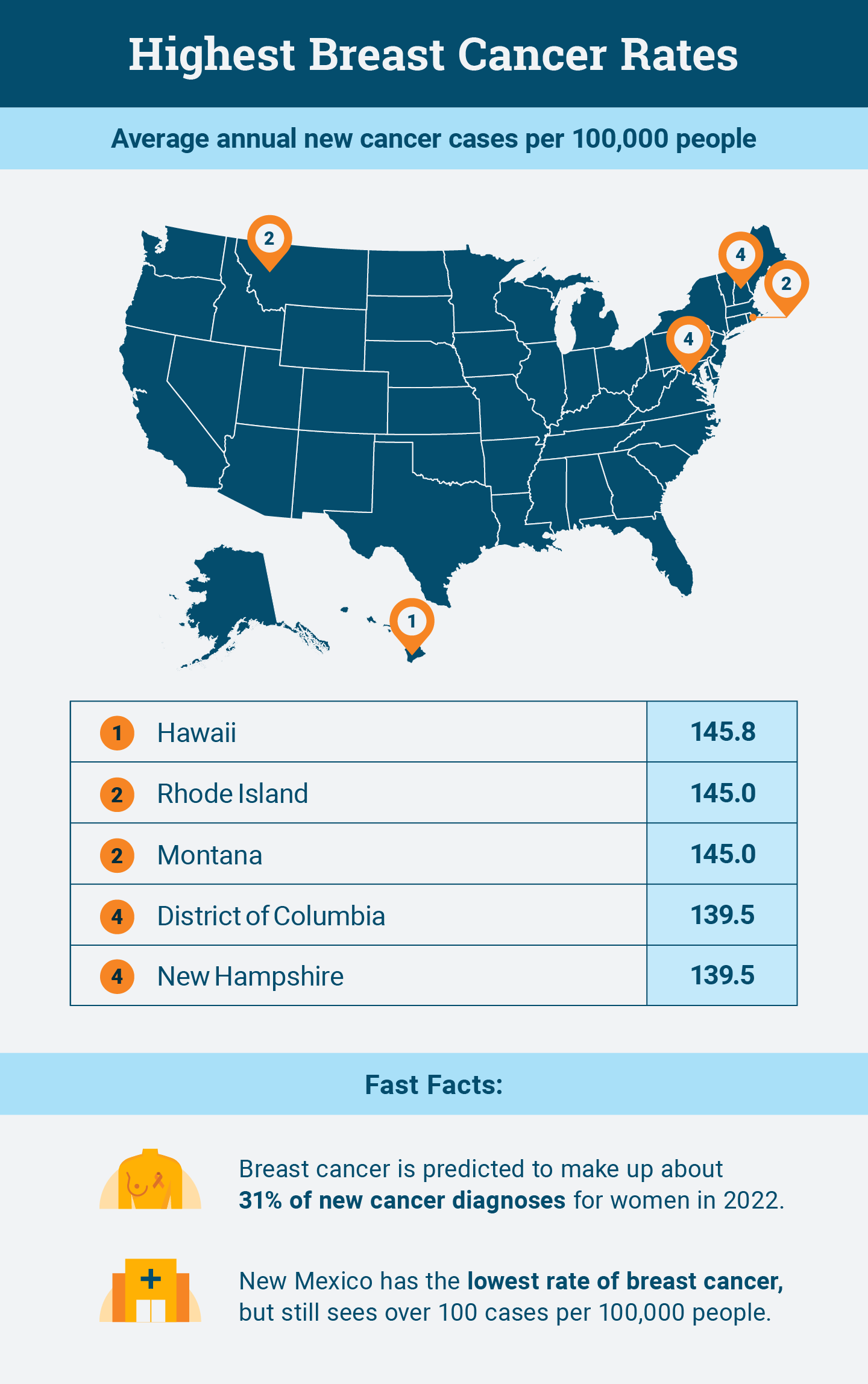
The state of Hawaii has the highest breast cancer rate in the country at 145.8. The state is home to the biggest proportion of individuals of mixed-race ethnicity in the U.S., which some researchers think may be a factor. One Hawaii cancer researcher stated, “Disparities in cancer risk and outcomes across racial and ethnic groups may reflect genetic variation as well as differences in diet, tobacco and alcohol use, obesity and other lifestyle exposures.”
Rhode Island and Montana tied for the second-highest rate of breast cancer, with Washington, D.C., and New Hampshire tied for third. While data shows that New Mexico has the lowest breast cancer rate in the country, it still experiences 109 new cases per 100,000 people. Overall, scientists estimate that 31% of all new cancer diagnoses for women in 2022 will be breast cancer.
Prostate Cancer Rates in the U.S.
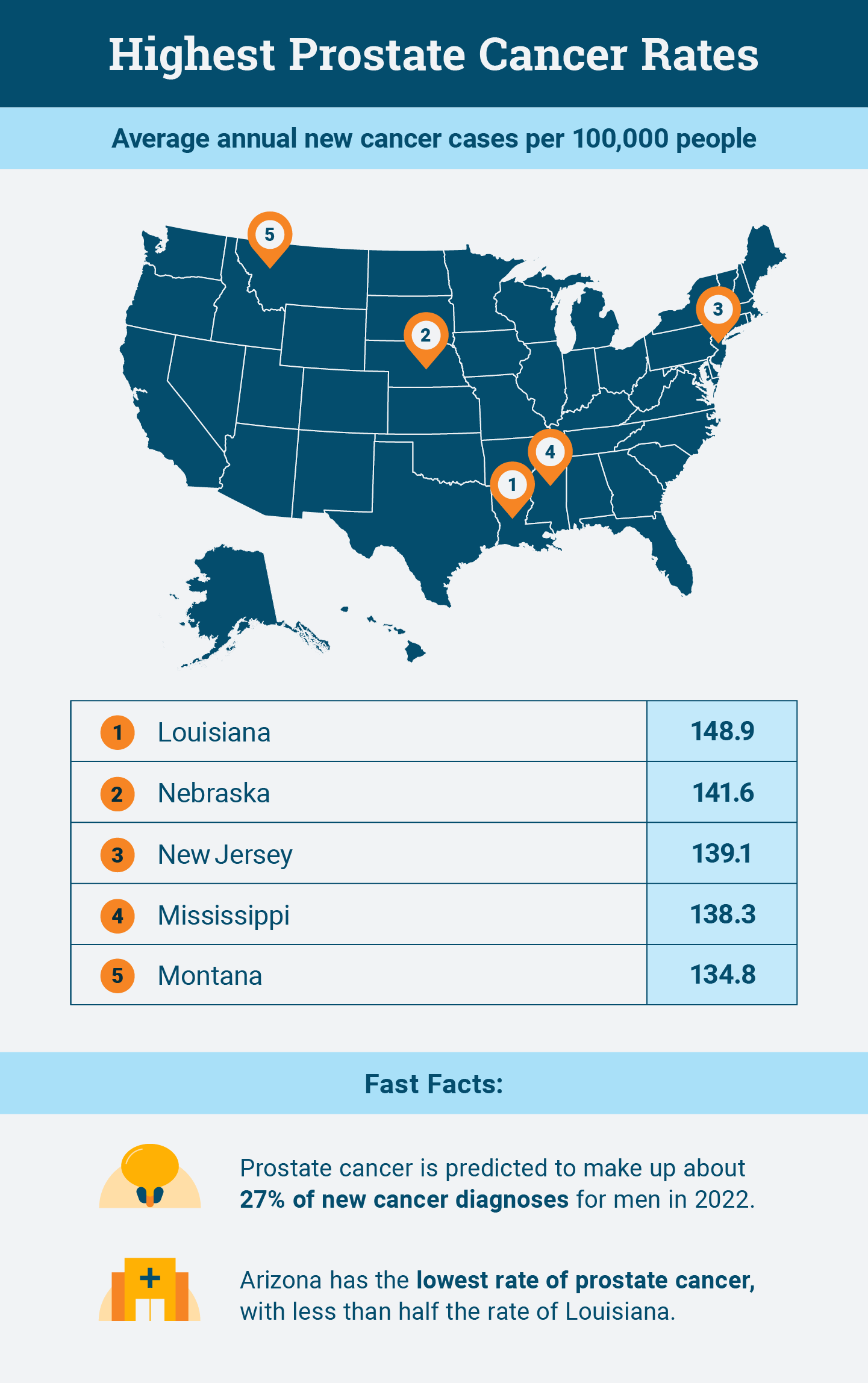
Men are at the greatest risk of prostate cancer in Louisiana, based on current statistics. Because the risk of African American males dying from low-grade prostate cancer is double that of men of other races, Louisiana’s large African American population is significant in understanding the heightened proportion of prostate cancer cases.
The full list of five states with the highest prostate cancer rates is Louisiana (148.9), Nebraska (141.6), New Jersey (139.1), Mississippi (138.3) and Montana (134.8). On the other end of the spectrum, Arizona experiences less than half the prostate cancer rate of Louisiana (71.1 vs. 148.9).
Lung Cancer Rates in the U.S.
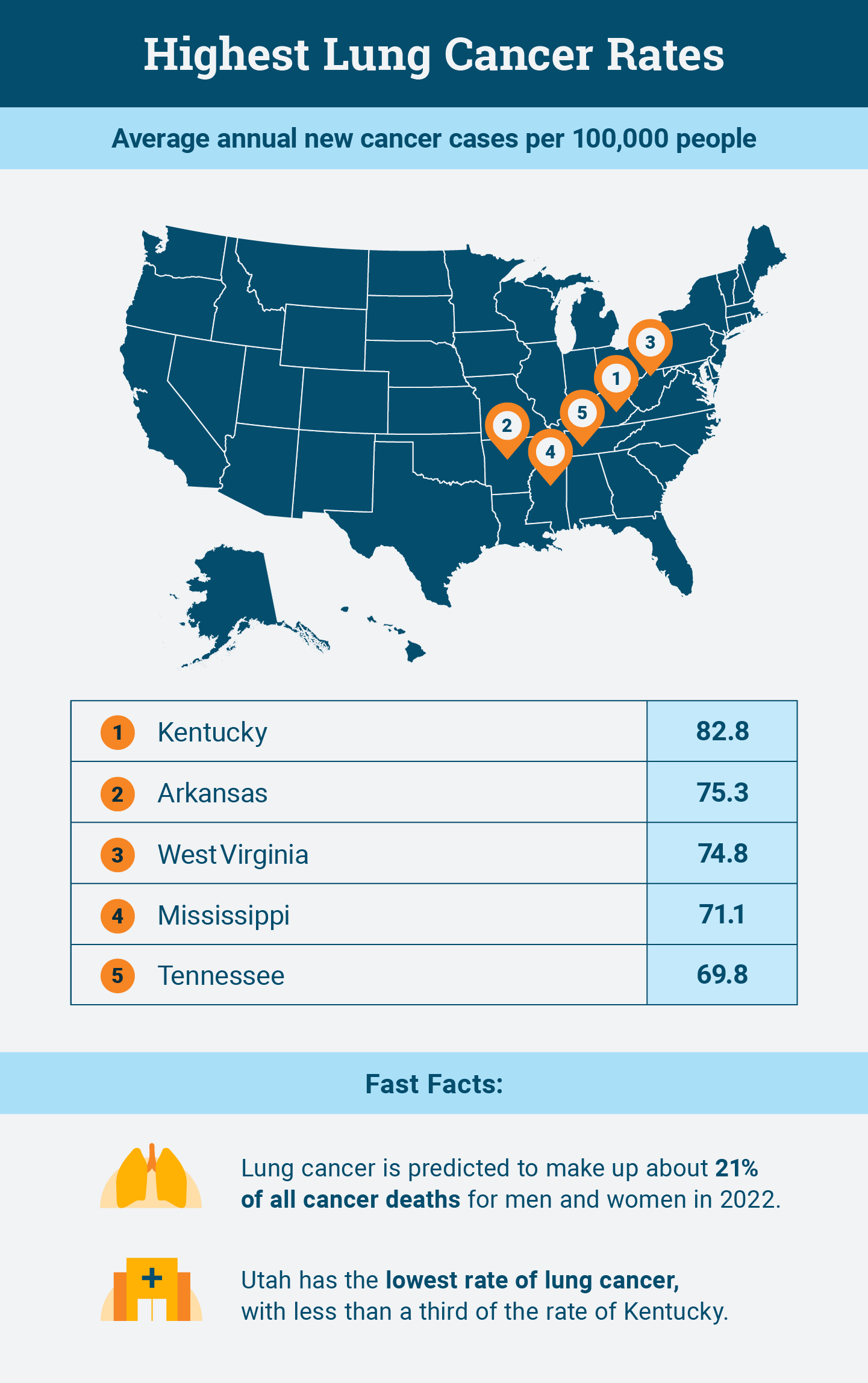
Regardless of where you live, lung cancer is the No. 1 cancer killer for men and women in the United States. It is projected to account for 21% of all cancer deaths in 2022. Kentucky’s high lung cancer rate of 82.8 is almost 30 points over the national annual average of 54 new cases per 100,000 people. Recent research notes that patients living in the often low-income Appalachian communities of Kentucky are heavily impacted by lung cancer.
All of the states that top this list of highest lung cancer rates (Kentucky, Arkansas, West Virginia, Mississippi and Tennessee) are also home to a large percentage of adult smokers.
Reasons for the Differences in State Cancer Rates
There is no one reason to explain why your home state’s cancer rates may differ from another. A multitude of factors contribute to these discrepancies from state to state. Important elements to consider include:
- Access to Resources: Poverty can directly impact a person’s access to medical care, including critical cancer screenings. Early detection through screenings creates greater chances for survival. Low awareness of potential symptoms and cancer risks can lead to delayed diagnoses and increased fatalities.
- Smoking Rates: States with higher numbers of adult smokers often have higher cancer rates, since smoking cigarettes is known to increase your risk of getting lung cancer 20 times. Overall, smoking is responsible for at least 87% of lung cancer deaths.
- Obesity Rates: Carrying excess body weight is linked to a heightened risk of developing 13 types of cancer. These cancers, including breast, esophageal, thyroid and pancreatic, comprise 40% of all cancer diagnoses in the United States each year.
In 2022, there will be an estimated 1,918,030 new cancer cases across the country. Understanding the statistics laid out in this data study creates opportunities to better appreciate the profound effect cancer has on the American public.
Methodology:
To identify the states with the highest and lowest cancer rates in the country, we reviewed statistical data from the CDC tracking the rate of new cancers in the United States. Each state’s rate was formulated by calculating the total new cancer incidences per 100,000 state residents. Results were then ranked for 24 different cancer types and an overall total of cancer cases for each state.







